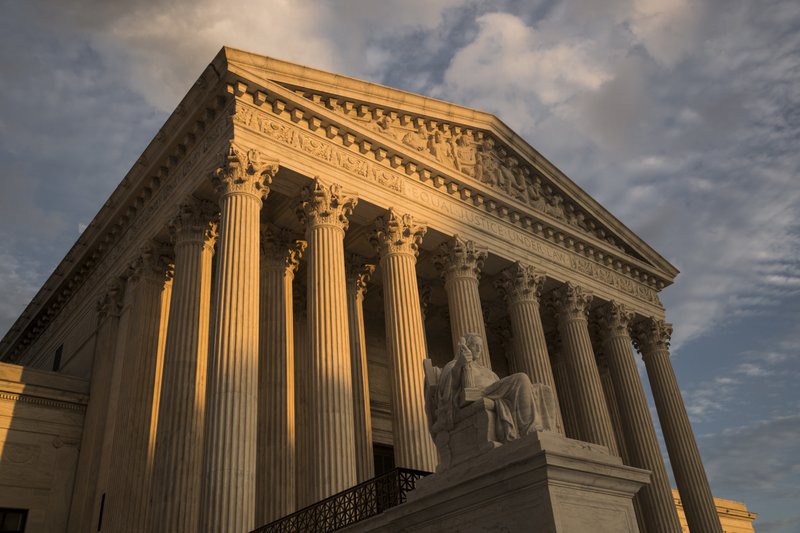
S. Joseph Scott
Special for News Talk Florida
In a previous post – (click here to read)- I reflected on some of the benefits for religious liberty stemming from the recent Supreme Court decision in the case of American Legion vs American Humanist Association where the High Court overturned a lower court decision. SCOTUS concluded it is not a violation of law to use government funds to maintain a war memorial which includes religious symbolism. In this case, a large cross. In the case of American Legion there is much for advocates of religious liberty to celebrate as addressed in the previous post. However, the rationale for their decision places that same liberty in jeopardy.
Judge Alito, writing for the majority, laid out four considerations in defending the previous decision. First, he explains, monuments and symbols like this one were often “established long ago, and thus, identifying their original purpose or purposes may be especially difficult.” Second, “as time goes by, the purposes associated with an established monument, symbol, or practice often multiply.” Third, “the message of a monument, symbol, or practice may evolve.” And finally, because local people come to appreciate public monuments government removal “may no longer appear neutral.” The forcible removal of a valued public monument is, in other words, perceived as an aggressive act of government intrusion. There’s a shocker.

With the exception of number four, this all sounds so postmodern. Granted, symbols are more given to multiple and changing meanings than are words. They lack the specificity which words carry. However, in our subjective age, even the meaning of words is said to be squishy- except of course all those words used to assert the squishiness of words. But, is it really the case that a cross is a Rorschach blot onto which we can import our own meaning? Is it an ancient artifact the meaning of which has so evolved it is now a dark mystery?
Enter Justice Ginsburg. In her dissent she noted, “The Latin cross is the foremost symbol of the Christian faith, embodying the ‘central theological claim of Christianity: that the son of God died on the cross, that he rose from the dead, and that his death and resurrection offer the possibility of eternal life.’” Brilliant! But, how can she be so sure? After all, this symbol was erected all the way back in 1925!

Leave it to the liberal justice to make such a razor sharp, piercing and perceptive statement of the obvious. Here is a great “the emperor has no clothes” moment injected into otherwise dull legal proceedings. Although the cross may include other meanings, like self-sacrifice, it cannot be emptied of its central, historical, plain meaning as a justification for allowing its public display. That is disingenuous.
This leads to a second and related concern.
The summary of this case reasons, “That the cross originated as a Christian symbol and retains that meaning in many contexts does not change the fact that the symbol took on an added secular meaning when used in World War I memorials.”
Using that argument results in this conclusion: It is just because the cross has been so emptied of its plain religious meaning, the barnacles of secular associations so grown over it to obscure its grandeur, we can allow it to stand. And, adding insult to injury, taking their argument one step further, they compare the public display of the cross to the tradition of prayer before Congress explaining, “the Framers considered legislative prayer a benign acknowledgment of religion’s role in society.”
Prayer is benign. No harm then in public prayer. The cross has been emptied of its religious meaning. No harm in public display. As long as religious emblems and activities are emptied of any real significance they can be preserved in our public discourse. That offends. Were I Jewish, and the Star of David were described as a benign and ambiguous symbol of someone, somewhere who believes something about God or the Holocaust, I hope I would take offense. Justice Ginsburg gets the meaning of the cross, and prayer for a Christian is, as the English poet George Herbert (1593-1633) put it, “reversed thunder.” These things are hardly benign to sober believers. And we are all sober believers religious or not.
True pluralism is not promoted by asking everyone, including secularists, to efface their cherished beliefs until we arrive together at some thin veneer that is essentially invisible and therefore innocuous. Let Christians be Christian, Jews be Jewish, Muslims Muslim, and Secularists secular. Then let us have civil discourse over real differences that matter to real human beings who hold real convictions about things that are worth disagreeing over. Bland uniformity is, well, bland. And dangerous.
Religious symbols and practices have meanings which their adherents understand clearly. Employing halting legal reasoning to justify their preservation in the public sphere empties them of their true significance undermining rather than promoting religious liberty. This is another way of saying: “Keep any real religious commitment private. Pray like you mean it – in secret. Pray vanilla in public.”
Religious expression scored a win in this decision. But, the fine print actually undermines that same religious liberty. As Cossette sings in Les Miserables, this decision is “a castle in the clouds,” no foundation. I say Hooray and Boo to the High Court on this one. Always read the fine print!
S. Joseph Scott has a Ph.D. in theology and has served in leadership positions in both higher education and religious institutions. He has published in both academic and popular journals and has a special interest in the intersection of faith and culture.








